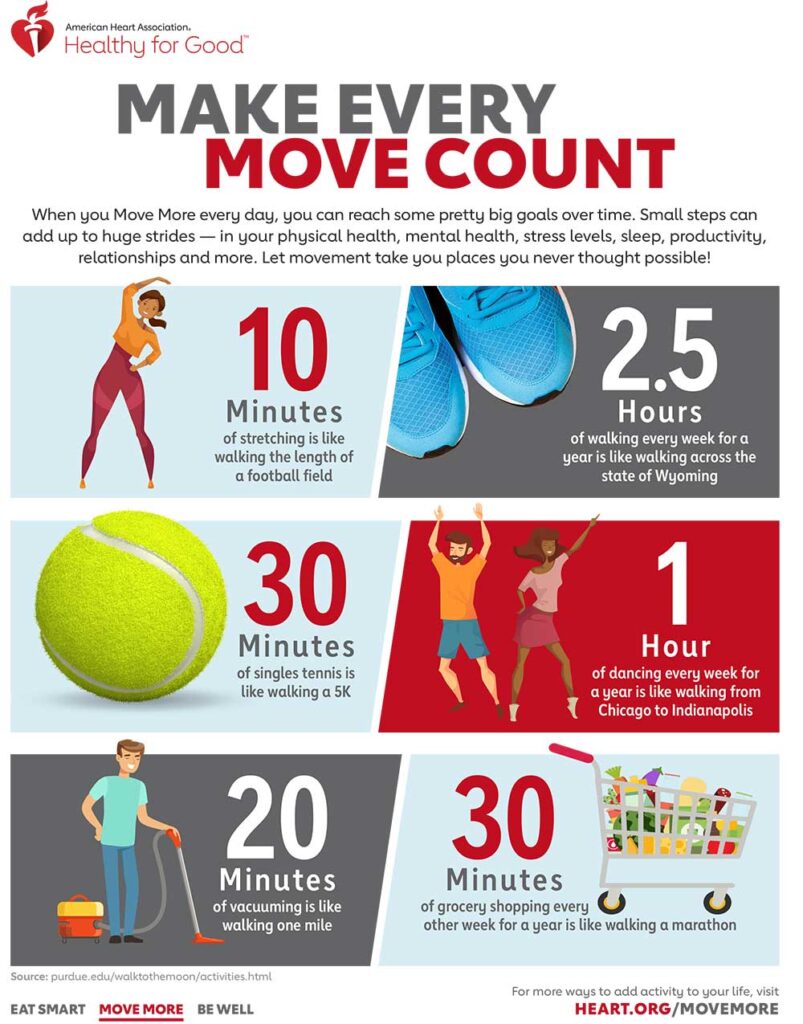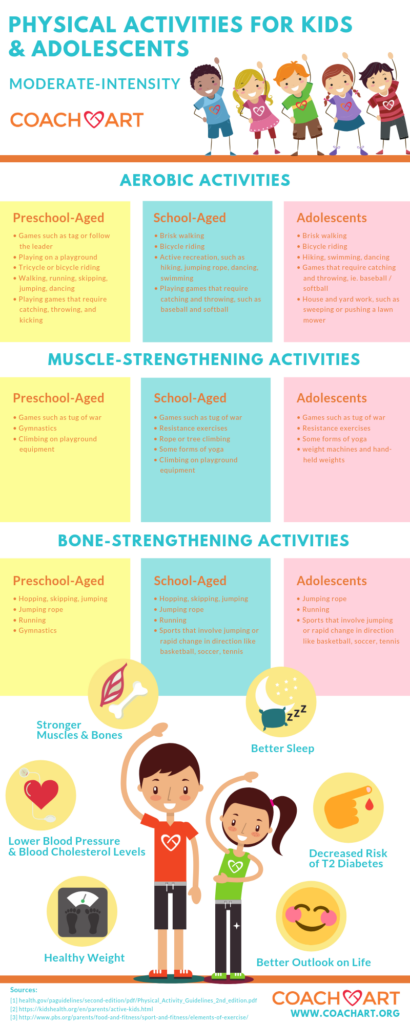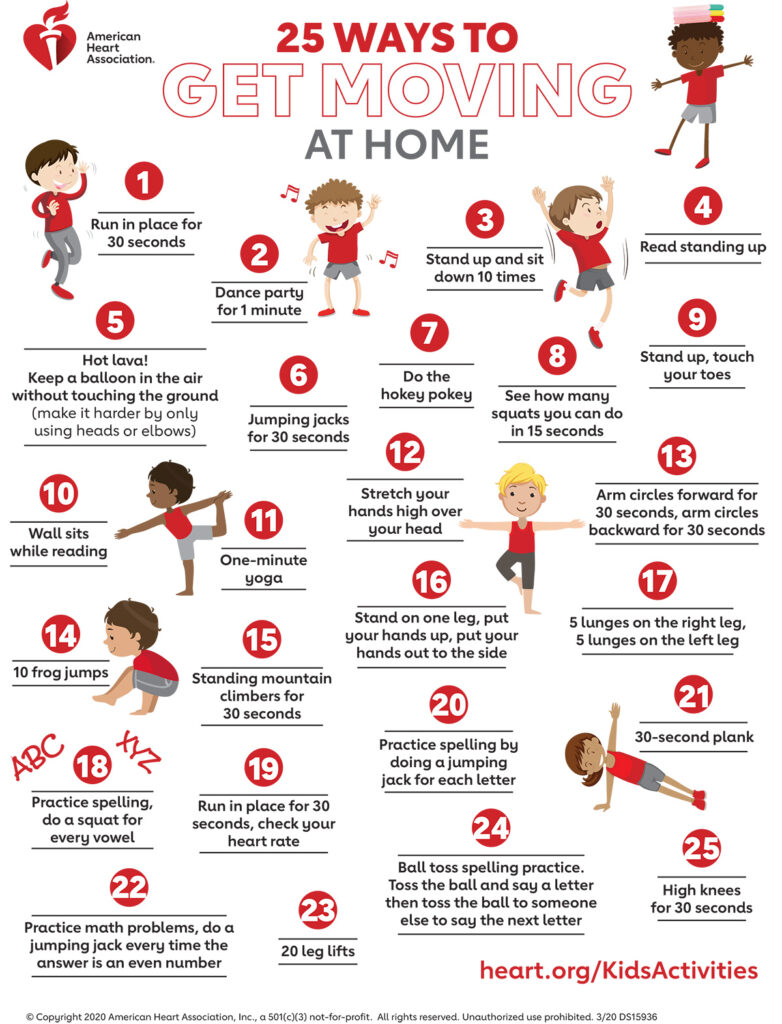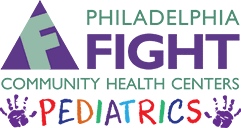Why is physical activity important?
Physical activity is beneficial for people of all ages because it can improve both mental and physical health! Some of the many advantages to exercise include improving sleep quality, reducing anxiety and depression, and increasing energy and concentration. Exercise also helps you achieve and maintain a healthy weight and decreases your risk for developing many health conditions later in life, such as: heart disease, hypertension, stroke, type 2 diabetes and many cancers. Adopting healthy habits early on increases the liklihood that an active lifestyle will be continued into adulthood!

How much exercise should children aim to be getting?
Preschool-aged children (3-5): At this age kids should be encouraged to keep active throughout the day to facilitate growth and development.
Children and Adolescents (6-17): 60 minutes of moderate-to-vigorous activity.

Reminder: You do not need to complete all of the recommended amount of exercise at once. This can be spaced out throughout the day and small things here and there can add up quickly! Often, we exercise without even thinking about it (running around with siblings, playing at school, walking to the bus stop) and these activities count towards your 60 minute target, as long as your heart is beating faster than when you are resting and you are breathing faster than when you are resting (indicating a moderate to vigorous activity level).

What are the different types of exercise?
According to the Centers for Disease Control and Prevention (CDC), there are 3 main types of exercise that children and adolescents should try to engage in each week:
Aerobic exercise: This type of exercise strengthens your heart and lungs. During these activities you will be breathing quicker and your heart will be beating very fast. Most of your recommended 60 minutes of daily activity should come from aerobic exercise and you should try to engage in it at least 3 times per week.
Examples: fast walking, jogging, running, swimming

Muscle-strengthening: The goal of these exercises is to build your muscles and increase your strength.
Examples: body weight exercises (e.g. push-ups or sit-ups), using hand held weights (or any weighted object like a frozen water bottle or canned food), yoga

Bone strengthening: Impact with the ground puts force on your bones that encourages them to grow and strengthen.
Examples: running, jumping rope, jumping jacks


Some tips to increase physical activity levels:
- Exercise in groups with family or friends!
Research tells us that parents and families are huge influences on a child’s physical activity habits! Support, encourage and motivate one another to try new activities together. Plus, exercising in a group makes it more fun, safe and social!
Start small and slowly build up your fitness routine.
Doing too much too soon is not sustainable and can lead to burnout or injuries. Be realistic about your current fitness level and find exercises that match it. For example, most fitness apps allow you to filter exercises by beginner, intermediate or advanced. If you decide to take up running, start with the walk-run method where you alternate bouts of running with walking. For strength training, begin with body weight or light weight exercises and slowly progress them by adding more weight and advancing to more challenging moves.

Listen to your body!
Discomfort is not the same as pain. If you feel pain, stop the exercise and rest before you continue with a different exercise or activity. For safety:

Set goals and track your progress.
This is the best way to hold yourself accountable and to track your accomplishments. In the section below we discuss how to set a SMART goal.

What is a SMART goal?
If you are interested in becoming more active, a good place to start is by setting a SMART goal. Begin by deciding what your specific goal will be. Next, decide how you will measure progress towards reaching that goal. Reflect on whether this goal will be achievable by making sure that it is realistic, that you are motivated to complete it and that you have the necessary skills and tools to do so. Then, assess whether your goal is relevant by reflecting on why it is important to you. Finally, keep your goal time-bound by choosing a reasonable deadline to achieve your goal.
Use the worksheet below to set a new exercise goal and track your progress:

Websites, Apps and Youtube Videos:
Kids:
Go Noodle: Videos, games and activities that get kids up and moving
Coach Josh Kids: Youtube channel with active videos for preschoolers
The Kids Coach: Youtube channel with videos grouped into different age groupsOnline Kids Martial Arts- DojoGo: Youtube channel with online kids martial arts

Teens:
- Nike Training Club App: This FREE app allows you to filter by exercise length, the amount of equipment you have available to you, your fitness level, the intensity of the workout and your focus (strength, endurance, mobility)
- FitON App: This FREE app lets you choose from a huge list of short, effective workouts, some that are even led by celebrity trainers! It includes unique features like the ability to set reminders about when you want to complete a workout and the ability to invite friends to join your workout over a video call.
- Move More Together At Home Workouts: Youtube channel by the American Heart Association with workout videos
Options for Kids or Teens:
- Game on Philly: This app connects you to a huge library of free videos about sports drills/skills and fitness workouts for diverse age groups, all of which can be done at home!
- YMCA Home Workouts: This youtube channel by the YMCA has exercise videos for all age groups
Yoga and mindfulness resources:
Just like for adults, yoga has many benefits for kids and adolescents. It can improve physical health by increasing strength, balance and flexibility. It is also great for mental health and can lower stress and anxiety, as well as, improve the ability to regulate attention.
For Kids:
- Study Break Yoga by Kids Health from Nemours
- Cosmic Kids Yoga on Youtube
- Moovlee
- Breathe, Think, Do with Sesame App–Mindfulness Activities
For Teens:
Resources in Philadelphia:
Gym Memberships:
- YMCA: There are many YMCA locations scattered throughout the greater Philadelphia area and they offer such great opportunities to get active and engage with your community. Some examples of amenities you may find at your local YMCA include: gymnasium courts, a strength and cardio fitness center, a pool, and exercise classes. They run an amazing program called the 7th grade membership initiative, which offers a FREE gym membership to ALL 7th grade students! Additionally, the YMCA offers financial assistance which can be applied for through their website.
- The Salvation Army: The Salvation Army Kroc Center features: two floors of exercise equipment, over 65 group exercise classes per week, a pool, a full gymnasium and a multi-sport outdoor athletic field. They are committed to providing a place of belonging regardless of ability to pay and offer an affordable fitness center and scholarships for memberships.
- Some insurance plans cover the cost of fitness memberships! Click your insurance below to learn more information and find a participating gym near you:
- Health Partners/Kidz Partners
- Keystone First
Ideas For Being Active Outside and Community Resources in Philadelphia:
Developmental Sports Leagues:
Organized activities and team sports have a number of social and physical benefits. Below is a list of organizations committed to providing affordable activities to children and youth across Philadelphia.
- MVP360- Basketball, Football, Softball, Baseball, Soccer, Volleyball
- Starfinder Soccer Program
- Kensington Soccer Club
- Anderson Monarchs- Soccer, Basketball and Baseball
- Lighthouse Sports- Field Hockey, Baseball, Softball, E-Sports
- Philadelphia Youth Basketball
- La Liga Del Barrio- Latino Youth Basketball League
- Philadelphia City Rowing
- Ed Synder Youth Hockey
- Boys and Girls Clubs of Philadelphia
- Squash Smarts
- Work to Ride- Horseback Riding
- Zhang Sah Martial Arts
Pools:
Tennis:
Biking and Running:
- Neighborhood Bike Works
- Bicycle Coalition Youth Cycling
- 19 Scenic Biking and Running Trails around Philadelphia
- Girls on the Run
- Students Run Philly Style
- Nike Running Club App
- Zombies, Run! Running Game App
Hiking:
Inclusive Exercise Options:
Videos or Apps:
National Center on Health, Physical Activity and Disability: Youtube channel with inclusive exercise options
NCHPAD 14 week program: A free, personalized nutrition and exercise program
Evolve21: Inclusive exercise app for people of all abilities
Philadelphia Resources:
Special Olympics of Philadelphia
Katie’s Komets Co-ed Basketball Team
Sedentary Time:
Just as it is important to add moderate to vigorous exercise into our daily routines, it is also important to try to limit the amount of time that we are spending sedentary. Today, there are so many reasons to be inactive (TV’s, tablets, video games, computers). This is worrisome because long periods of low-energy activities have been linked to an increased risk of heart disease and type 2 diabetes. Too much screen time before bed can increase the amount of time it takes to fall asleep and decrease quality of sleep. With this in mind, here are some tips and recommendations to help reduce sedentary time:
- Try to limit sedentary time (current recommendations from the CDC is for no more than 2 hours of screen time per day)
- Not all sedentary time is the same, certain activities (reading, doing homework) should be prioritized over others (watching TV, video games, non-educational tablet or computer time)
- Break up long periods of inactivity (get up and walk around, do some jumping jacks, try standing at your desk for awhile)
- Replace sedentary behaviors with more active ones (playing outside with friends after school instead of watching TV, walking to the store instead of driving or taking public transit)



